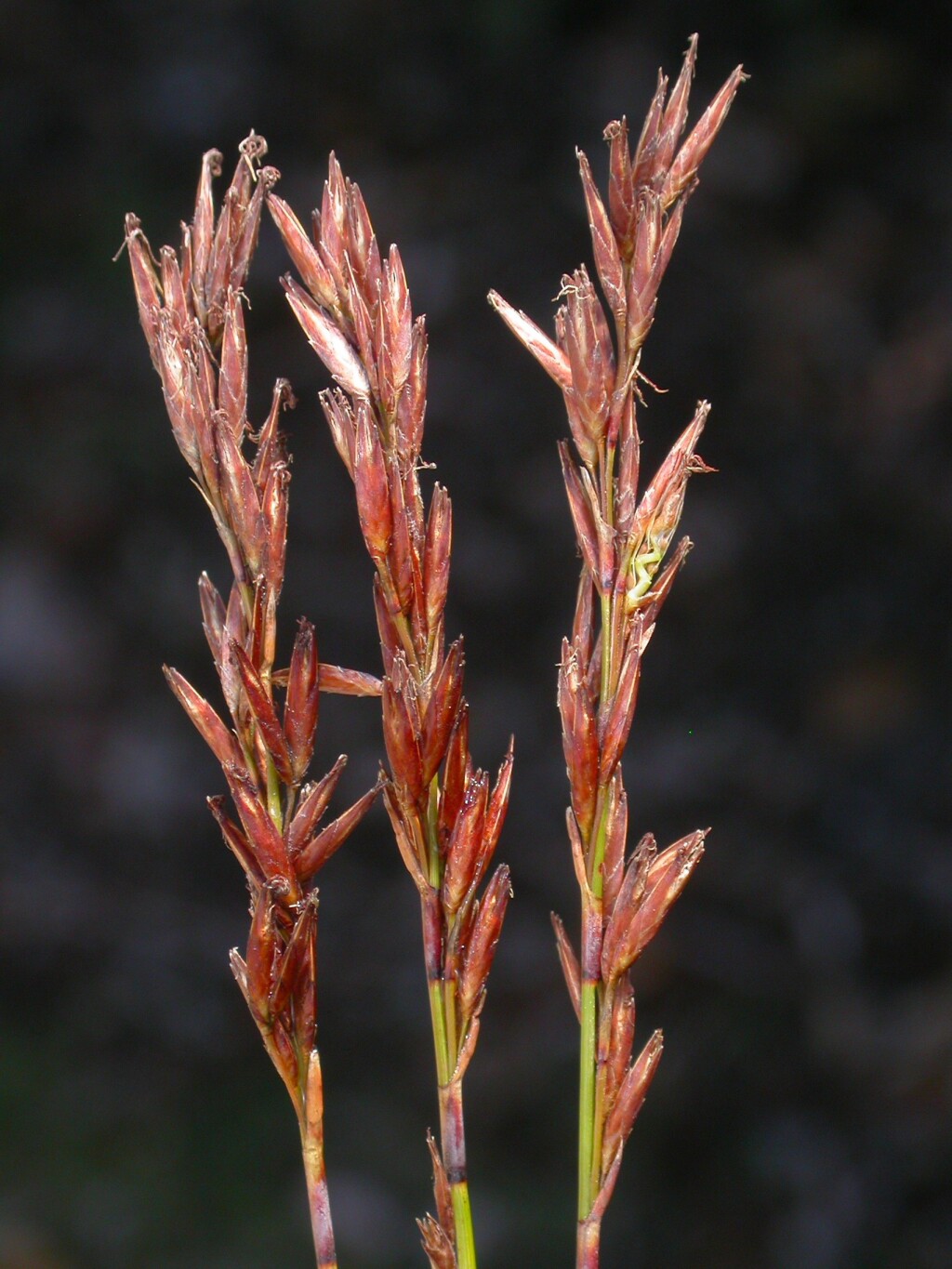Schoenus brevifolius
R.Br.Perennial with short, stout rhizome. Culms erect, rigid, deeply grooved, nodeless, 30–90 cm high, 1.0–1.8 mm diam. Leaves with blade to 1.5 cm long; sheath dark red-brown, ± smooth, glistening to shining; mouth glabrous; ligule present. Inflorescence narrow, erect, 5–25 cm long, with spikelets clustered at 4–7 nodes; lowest involucral bract to 1.5 cm long. Spikelets narrow-ovate, acute, 2–5-flowered, 8–11 mm long; glumes 7–9, lowest 2–4 empty, acute, red-brown, dull to glistening, with ciliate or rarely glabrous margins; fertile glumes 7–10 mm long; hypogynous bristles absent or rarely 1–3, filiform, to twice length of nut. Nut trigonous, obovoid, prominently 3-ribbed, slightly wrinkled, glabrous, dull, red-brown, 1–1.5 mm long, 0.5–0.7 mm diam. Flowers spring–summer.
GleP, VVP, GipP, OtP, EGL, EGU, WPro, HSF, Strz. Also Qld, NSW, Tas. New Zealand, New Caledonia. Scattered and locally common in near-coastal swamps and damp heaths east of Port Phillip Bay, with outlying populations at Anglesea and possibly Portland.
Formerly confused with S. laevigatus.
Wilson, K.L. (1994). Cyperaceae. In: Walsh, N.G.; Entwisle, T.J., Flora of Victoria Vol. 2, Ferns and Allied Plants, Conifers and Monocotyledons, pp. 238–356. Inkata Press, Melbourne.
 Spinning
Spinning

